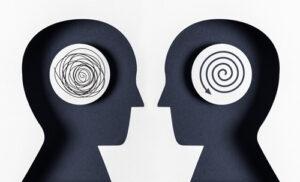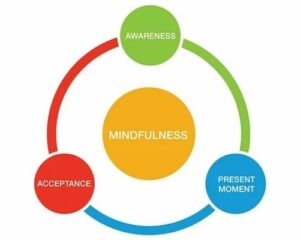Depression is a prevalent mental health condition that affects millions of people worldwide. It can manifest in various forms, from mild to severe, and its impact on an individual’s life can be profound. Fortunately, there are different types of therapy available to help those struggling with depression find relief and improve their overall well-being. In this comprehensive guide, we will explore the various types of therapy for depression, their principles, and their effectiveness.
Contents
Understanding Depression

Before delving into the various therapy options, it’s essential to understand what depression is. Depression is not merely feeling sad or down; it’s a complex mental health disorder characterized by persistent feelings of sadness, hopelessness, and a loss of interest in activities once enjoyed. It can affect a person’s thoughts, emotions, and physical health, often leading to problems in daily life.
Importance of Seeking Therapy
Recognizing the need for therapy is the first step in addressing depression. Many individuals hesitate to seek help due to stigma or misconceptions about mental health. However, therapy is a crucial aspect of managing and overcoming depression, as it provides valuable tools and support for those facing this challenge.
Types of Therapy for Depression
When it comes to treating depression, there is no one-size-fits-all approach. Different types of therapy cater to the diverse needs of individuals. Let’s explore some of the most effective therapeutic options:
Cognitive-Behavioral Therapy (CBT)
Cognitive-Behavioral Therapy (CBT) is one of the most widely used and researched forms of therapy for depression. CBT focuses on identifying and challenging negative thought patterns and behaviors. The core principles of CBT include:
- Recognizing distorted thought patterns: Patients learn to identify irrational or negative thought patterns that contribute to their depression.
- Reframing thoughts: Through therapy, individuals learn to reframe these negative thoughts into more balanced and realistic ones.
- Behavioral activation: CBT encourages patients to engage in pleasurable and rewarding activities, even when they don’t feel like it.
- Homework assignments: Patients often receive assignments to practice the skills learned in therapy between sessions.
CBT has a strong evidence base and is known for its effectiveness in treating depression, making it a popular choice among therapists and patients.
Interpersonal Therapy (IPT)
Interpersonal Therapy (IPT) is a time-limited, structured therapy that focuses on improving relationships and communication skills. It operates on the premise that depression is often related to unresolved interpersonal issues. IPT includes:
- Identifying problematic relationships: The therapist helps the patient identify relationships that may be contributing to their depression.
- Developing communication skills: Patients learn to express their emotions and needs effectively, improving their interpersonal relationships.
- Grief resolution: IPT can be particularly helpful for individuals dealing with loss or bereavement.
IPT is an evidence-based therapy, especially effective for depression triggered by interpersonal difficulties or significant life changes.
Psychodynamic Therapy
Psychodynamic therapy is rooted in Freudian principles and explores how unconscious thoughts and past experiences influence current feelings and behaviors. While it is less commonly used than CBT or IPT for depression, it can still be beneficial for some individuals. Key elements of psychodynamic therapy include:
- Exploring the past: Therapists and patients delve into past experiences and childhood relationships to uncover unresolved conflicts.
- Developing insight: The goal is to gain insight into how past experiences may be influencing current emotional struggles.
- Working through transference: Patients may project feelings or experiences from their past onto the therapist, providing an opportunity for exploration.
Psychodynamic therapy is typically long-term and may require a significant time commitment compared to other types of therapy.
Mindfulness-Based Therapy

Mindfulness-based therapies, such as Mindfulness-Based Cognitive Therapy (MBCT) and Mindfulness-Based Stress Reduction (MBSR), have gained popularity as effective treatments for depression. These therapies incorporate mindfulness meditation techniques to help individuals manage depressive symptoms. Key components of mindfulness-based therapy include:
- Mindful meditation: Patients learn to focus on the present moment without judgment, reducing rumination and negative thinking.
- Awareness of bodily sensations: Individuals become more attuned to physical sensations and learn to manage them effectively.
- Acceptance: Mindfulness teaches individuals to accept their thoughts and feelings without trying to change or judge them.
Mindfulness-based therapies can be used alone or in combination with other therapeutic approaches, offering a holistic approach to depression treatment.
Group Therapy
Group therapy is another valuable option for individuals with depression. It involves a therapist leading a group of people with similar struggles, providing a supportive and empathetic environment. Group therapy offers various benefits, such as:
- Reducing isolation: Participants can connect with others who understand their experiences, reducing feelings of loneliness.
- Sharing coping strategies: Group members can share techniques and strategies that have worked for them in managing depression.
- Building social skills: Group therapy can improve interpersonal skills and foster a sense of community.
Group therapy can be a standalone treatment or complement individual therapy.
Music Therapy
Music therapists use a wide range of techniques and approaches tailored to the needs of their clients. Some common techniques include:
- Active Music-Making: Clients actively engage with musical instruments, their voices, or other tools to create music. This can include drumming, singing, or playing an instrument.
- Receptive Music Listening: Clients listen to carefully selected music to evoke specific emotional responses or memories. This can be particularly helpful for individuals with cognitive or emotional disorders.
- Songwriting and Lyric Analysis: Clients may write their songs or analyze existing lyrics to explore and express their emotions, thoughts, and experiences.
- Music and Movement: Movement-based activities, often accompanied by music, can help individuals improve motor skills, coordination, and emotional expression.
- Guided Imagery and Music (GIM): GIM is a specialized technique where clients listen to music and explore their inner thoughts, emotions, and imagery in a therapeutic setting.
Alternative Therapies

Some individuals explore alternative therapies such as:
- Acupuncture: Acupuncture is a traditional Chinese medicine practice that involves the insertion of thin needles into specific points on the body to stimulate energy flow and promote balance. It is commonly used for pain management, stress reduction, and various health conditions.
- Chiropractic Care: Chiropractic care focuses on the musculoskeletal system and spinal alignment. Chiropractors use manual manipulation and adjustments to alleviate pain, improve mobility, and enhance overall health.
- Homeopathy: Homeopathy is based on the principle of “like cures like.” Homeopathic remedies, often highly diluted, are used to stimulate the body’s natural healing abilities. It is used for a wide range of conditions, from allergies to emotional well-being.
- Ayurveda: Ayurveda is an ancient Indian system of medicine that emphasizes balance and harmony in the body and mind. It involves personalized dietary plans, herbal remedies, and lifestyle recommendations to promote health.
- Naturopathy: Naturopathic medicine combines natural therapies, such as herbal medicine, nutrition, hydrotherapy, and lifestyle counseling, to support the body’s ability to heal itself.
Choosing the Right Therapy

Selecting the most suitable therapy for depression depends on individual preferences, the severity of the condition, and the recommendations of mental health professionals. It’s essential to consult with a therapist or psychiatrist to determine the most effective treatment plan.
Here are some steps for choosing the right therapy:
1. Identify Your Goals and Objectives
Before diving into the world of therapy, take some time to reflect on your goals and objectives. What specific issues or concerns are you seeking help for? Are you looking to manage anxiety, overcome depression, improve relationships, or develop coping strategies for stress? Understanding your objectives will guide you in choosing the most relevant therapeutic approach.
2. Seek Recommendations and Referrals
Talk to trusted individuals in your life, such as friends, family members, or healthcare providers, and ask for recommendations. If you have a primary care physician or psychiatrist, they can often provide referrals to therapists or counselors. Personal recommendations can be invaluable in finding a therapist who is well-suited to your needs.
3. Consider the Therapist’s Expertise and Credentials
Therapists come from various backgrounds and specialties. Consider the therapist’s qualifications, experience, and expertise in dealing with the specific issues you want to address. Look for credentials such as Licensed Professional Counselor (LPC), Licensed Clinical Social Worker (LCSW), Psychologist, or Psychiatrist. Verify their licensing and credentials through the appropriate state or national licensing board.
4. Evaluate Compatibility and Rapport
Establishing a strong therapeutic relationship is essential for the success of therapy. Schedule initial consultations or phone calls with potential therapists to get a sense of their personality, communication style, and whether you feel comfortable with them. Trust your intuition; if you don’t feel a connection, it’s okay to explore other options.
5. Consider Practical Factors
Practical considerations, such as location, scheduling, and cost, are essential. Determine whether you prefer in-person therapy or are open to online therapy options. Additionally, inquire about fees, insurance coverage, and payment options to ensure therapy is financially feasible for you.
6. Be Open to Trying Different Therapists
Finding the right therapist may require trying out a few before you discover the one that resonates with you. Don’t be discouraged if the first therapist you see doesn’t feel like the right fit. Keep an open mind and continue searching until you find the therapist who best aligns with your needs and goals.
Conclusion
Depression is a challenging condition, but it’s treatable. Therapy, in its various forms, offers hope and healing for those grappling with depression. Whether through CBT, IPT, or creative therapies like art and music, individuals can find the support they need to reclaim their lives from the grip of depression.
If you are experiencing depression related issues, Online Depression Counseling at TherapyMantra can help: Book a trial Online therapy session.


